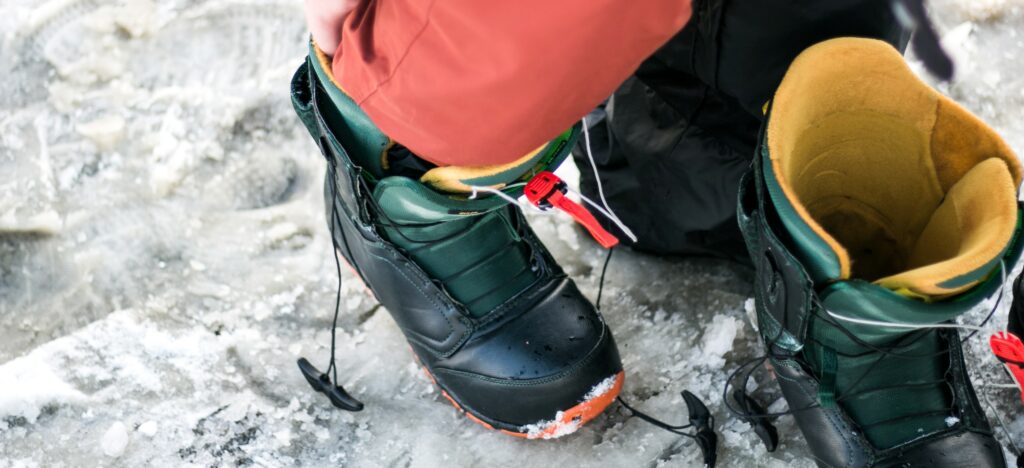Snowboarding can be an expensive hobby and equipment is pricey regardless of whether or not you rent it or buy it outright so many people look for cheaper alternatives. However, using the right snowboarding equipment is essential and you should not make any substitutes.
In this article I’ll be explaining why using specialist snowboard boots is essential if you want to head out onto the slopes safely.
Snowboarding with Regular Boots?
Regular winter or snow boots cannot be used for snowboarding as they are too soft, thin and flexible so do not provide enough support or protection for snowboarding. Instead, specialist snowboard boots should be used which are much thicker and rigid compared to regular winter/ snow boots.
Differences Between Winter and Snowboard Boots
There are several differences between winter/ snow boots and snowboard boots including:
- The materials and construction
- Lacing systems
- Fit and feel
- Binding compatibility
Let’s take a look at these differences in a bit more detail.

Materials and Construction
Snowboard and winter boots both have a different construction to make them suitable for snowboarding and hiking respectively.
The outer material of a snowboard boot is typically made from either leather or thick fabric and the lining is often made from wool or artificial fabric. The sole is usually made from foam but sometimes has rubber at the back of the heel to provide support. The outsole is often made from rubber and midsole from foam.
Most snowboard boots have a cemented construction which means that the outsole and midsole are glued to the bottom of the boot which helps provide rigidity but makes them uncomfortable for walking as they don’t flex as much.
Snow and winter boots are much softer, thinner and have more flex compared to snowboard boots. Boots designed specifically for snowboarding need to be rigid and thick to protect the foot and provide ankle support.
If the boot was softer, the risk of twisting out an ankle and other injuries would be increased. This is the main reason why snow/ winter boots should not be used for snowboarding.
Lacing System
Most snow/ winter boots will have a traditional lacing system. Snowboard boots are available with several types of lacing system:
- Speed lacing: these have a pull tab to tighten the boot and then you pull back to lock it in place and tuck the tab away
- Boa lacing: a cable is connected to a dial which you can spin to crank the laces tighter
- Traditional lacing: same as snow/ winter boots
Fit and Feel
Snowboard boots should have a very snug boots and will feel tighter compared to regular winter walking boots. When standing up straight, the toes should push slightly on the ends of the snowboard boots and when bending this pressure should be lifted. The heels should also be pushed down into the boot.
If the snowboard foots are not tight enough and fit too loosely they will not provide enough support which increases the chance of injury. Loosely fitting boots will also make it more difficult to control the snowboard.
Regular winter boots will feel much more comfortable for walking compared to snowboard boots which are very difficult to walk in. This is because winter boots have a slightly looser fit as the toes do not press against the end of the boot when stood up straight.
Binding Fitment
Snowboard boots are designed to fit bindings which are attached to the snowboard to keep the rider in place. Regular winter and snow boots will usually not fit these bindings so are not suitable for snowboarding in.

Can Snowboard Boots be Used for Walking?
Snowboard boots are not used for walking because they fit too tightly and are too heavy and rigid making them uncomfortable. Hence, you can not use snowboard boots in the place of winter or snow boots for hiking.
All these types of shoes are designed for a specific purpose so if you want to go snowboarding, you’ll need snowboarding boots and if you want to keep your feet warm whilst walking in the snow then you’ll need snow boots.
